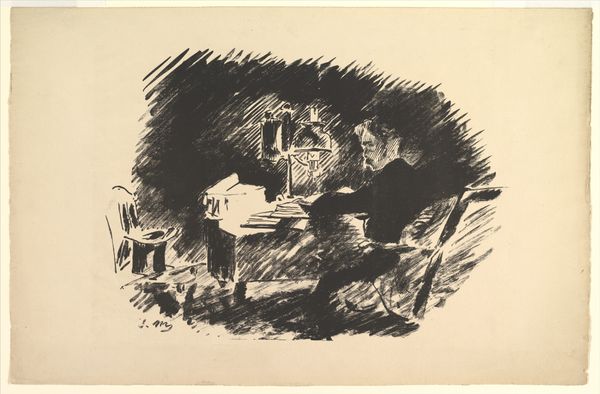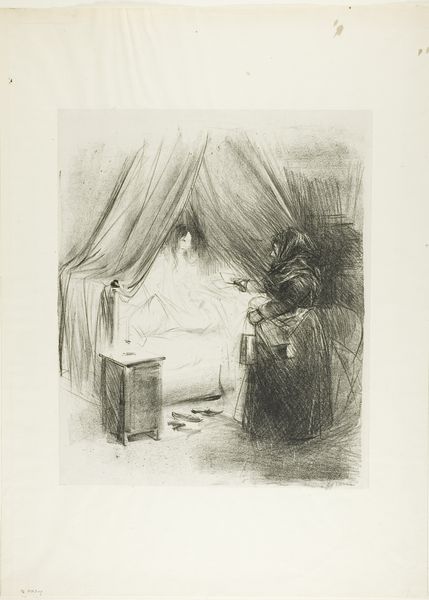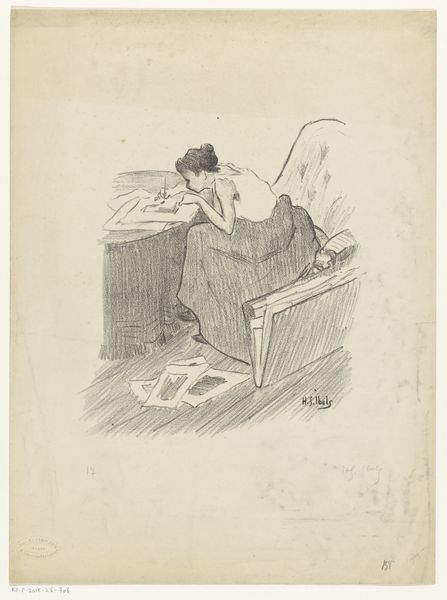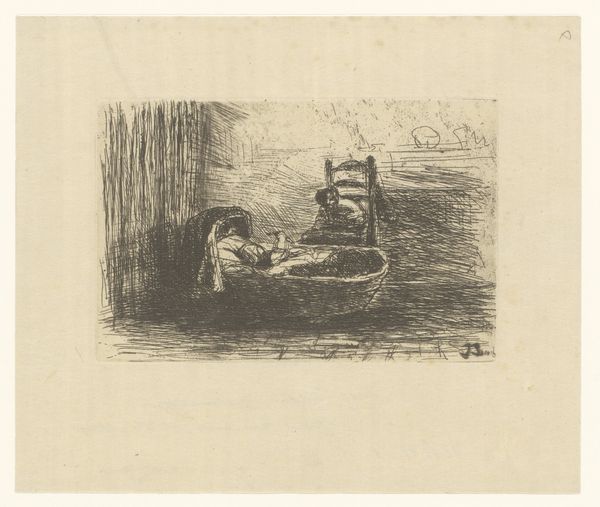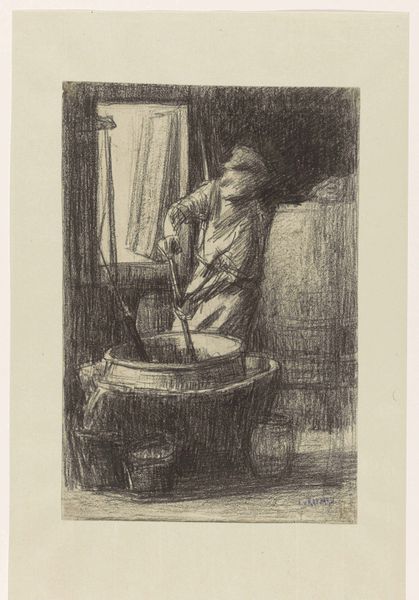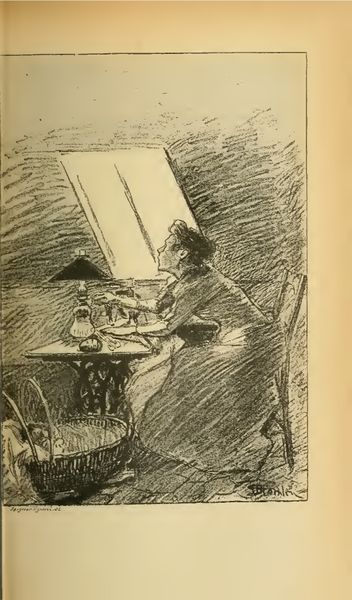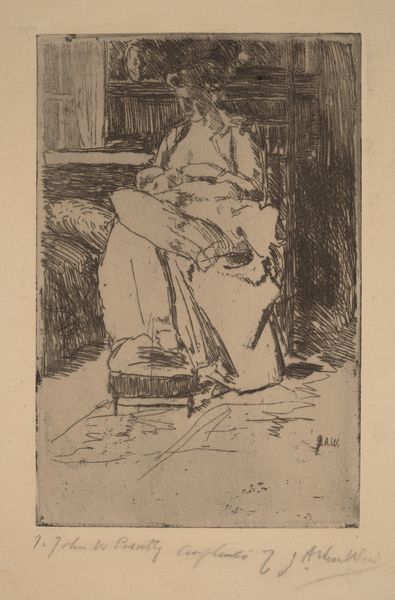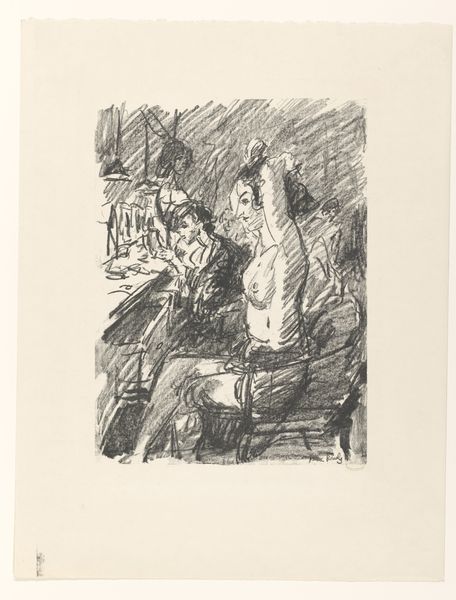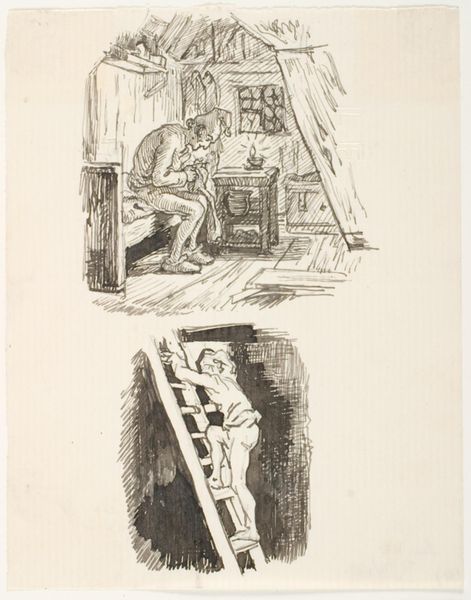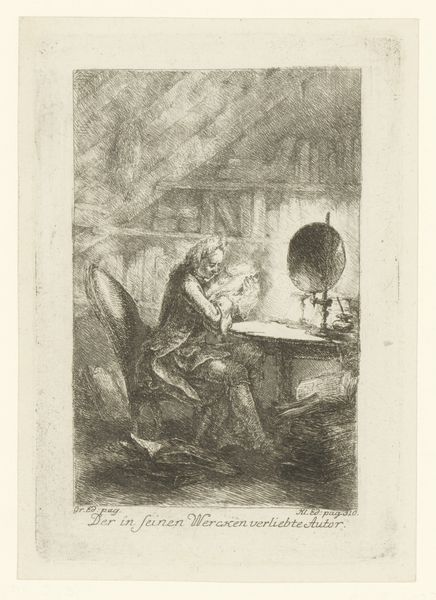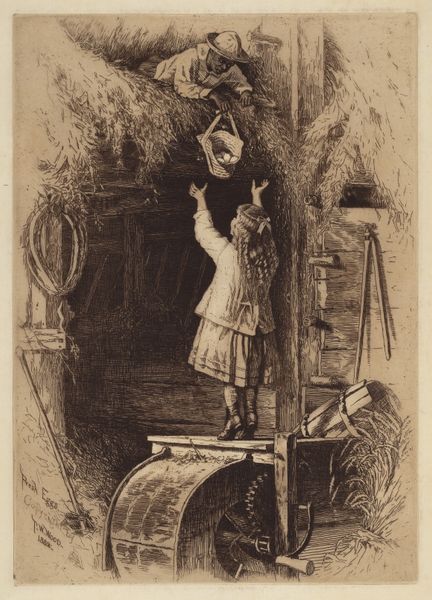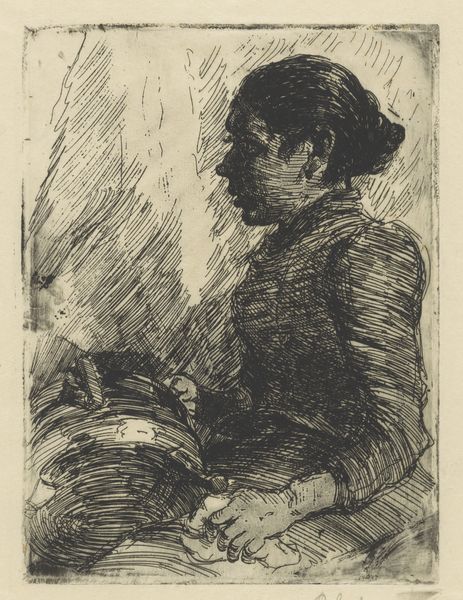
Dimensions: 343 × 312 mm (image); 548 × 382 mm (sheet)
Copyright: Public Domain
Curator: Welcome. Here, we're looking at "The Joys of Summer," a lithograph by Théophile Alexandre Steinlen from 1894. It resides here at The Art Institute of Chicago. Editor: My goodness, what a study in quiet observation. The hatching gives it such a somber, intimate feeling. Almost melancholy despite the title. Curator: That's an astute observation. The image is a print. Prints during this period were crucial for disseminating imagery to a broad public. Think about its accessibility. Editor: Exactly! And look at the way the light is handled. The woman stares out the window as light floods in, while everything else is veiled in shadow, almost like the walls are closing in. It’s beautifully haunting. Curator: Precisely. This domestic scene highlights the reality of women's lives in fin-de-siècle Paris. The societal constraints they faced. While this could read like a snapshot of joy—and indeed it does capture a sort of moment—it doesn’t deny that feeling of burden you are suggesting. The composition with her almost pinned in the room enforces that constraint. Editor: The little basket, I presume it holds a baby, feels both tender and trapping. It speaks to the constant work and responsibilities but does it speak to choice or the illusion of it? That’s powerful for just pencil and paper, right? Curator: Without prints, such images wouldn’t be a part of wider social and political commentary. Consider, it was part of a tradition that offered a voice to issues—gender inequality, labor and the lives of working women. The role of print making as a democratizing art form really cannot be overstated. Editor: The artist offers no easy answers and leaves the emotion open. Steinlen creates space to feel the nuances. So yes, he succeeds beyond craft, and in context becomes, like you say, incredibly politically relevant! Curator: Yes, and thinking about that dissemination means we must reflect on what it brings to those of us experiencing art. To what extent has access to images in general democratized our interpretation? What joys do we draw now from these glimpses into the past? Editor: A beautiful paradox. A simple print, heavy with suggestion and meaning and accessible to the masses, but demanding deeper readings that perhaps aren't so readily available! Food for thought, certainly.
Comments
No comments
Be the first to comment and join the conversation on the ultimate creative platform.
